Matador Network's Blog, page 874
April 23, 2020
Where to kitesurf in Puerto Rico
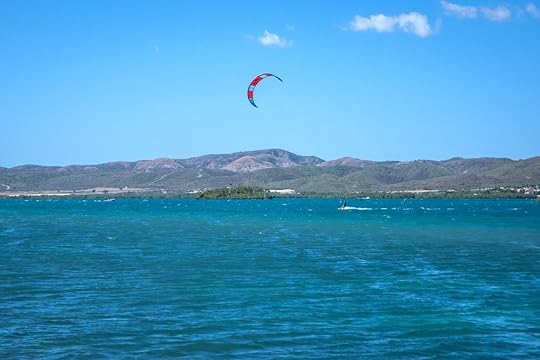
The world is full of great places to kitesurf. But if you want an ideal location to start this sport, Puerto Rico is the place. It’s a beautiful spot that’s easy to get to and has steady winds for most of the year. The water-sports culture there also means you have several options of where to go and established shops providing lessons, gear, and instructors. In fact, you’ll find plenty of kitesurfing outfits right in the capital, San Juan. If your time is limited, San Juan is a solid kitesurf rookie destination — but for a real beach vibe, you should travel beyond the city. Here’s what you need to know to have the best experience kitesurfing in Puerto Rico.
Lesson timing — because wind (but not too much wind) is critical
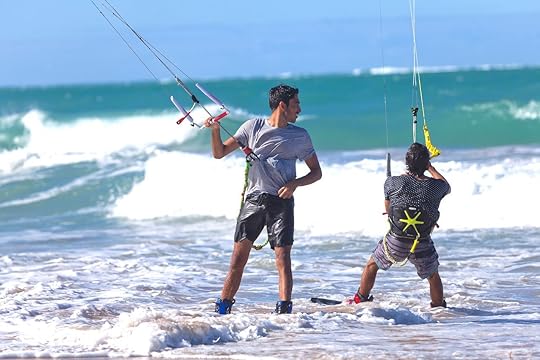
Photo: Infinite_Eye/Shutterstock
If you’ve never done any kiting before, take a lesson from a professional. Kitesurfing requires a fair amount of gear, all of which will be new to most people. Even if you’re confident with other water sports, it’s worth getting some instruction. We recommend lessons from the incredibly friendly team at Goodwinds, located on beautiful Dorado Beach, a 45-minute drive from San Juan. The shop offers lessons and gear for everything from kitesurfing to e-foiling, as well as surf camps for kids every Saturday and Sunday.
Obviously, kitesurfing requires wind. But as a beginner, you don’t want too much wind, known as “nuking” in the sport’s parlance. It’s ideal to have a three-to-five-day spread when you can take lessons. Depending on conditions, you may be able to take lessons every day, or you may have to wait several days until it’s right. Even if the wind is calm, ask if you can test a smaller kite on the beach, because any time with the kite is beneficial.
It’s worth connecting with the shop you plan to use beforehand to let them know you’re coming for one or more lessons. They’ll know best and can check the conditions, suggest the right days, and communicate with you if things change.
What to expect from your first days in the surf
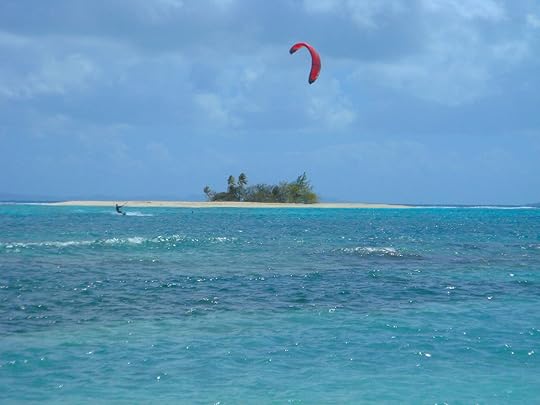
Photo: Tracy Vanderford/Shutterstock
Unless you’re in the top one percent of naturally gifted kiters or already have some experience, on day one you should expect to practice for two to three hours and shouldn’t expect to be on the board. A good instructor will take time to walk you through the equipment before you ever see a kite — in particular, the Control Bar and Chicken Loop — and guide you through kite terminology.
You’ll also practice “rigging up” — connecting the lines to the kite — and then your instructor will likely take the kite, get it up in the air, and pass it over to you. This is when it starts to get exciting. The instructor will guide you through some basic maneuvers so you can get a feel for the wind and how the kite responds to the control bar. You will certainly crash the kite on the beach a few times.
Once you’re more comfortable with the kite, you’ll probably get some drilling in, moving and stopping the kite at 10 o’clock, 11 o’clock, and — the key — 12 o’clock (directly above your head). Chances are you’ll start with a smaller kite around four meters, or 13 feet, in diameter. Once you get comfortable with this, you’ll move on to a bigger kite, one that you’re likely to use once you get out on the water.
The next step is “body dragging.” You’ll move out into the water with the kite, let your feet float behind you, and feel the kite pulling you through the water. Finally, on day two or three, depending on the length of your lessons and skills with the kite, you’ll graduate to the board. Most shops will send someone out on a boat with you, which is ideal because it’s easy to end up pretty far away from your starting point.
Prepping for your trip — proper training and what you need to bring

Photo: Pakdee OSK/Shutterstock
You don’t need much gear. A swimsuit and a rash guard, either long or short sleeve, will suffice, and the water in Puerto Rico is warm. Some people opt for neoprene booties. Most shops will offer impact vests for beginners, which provide buoyancy and protection from falls and knocks by equipment without impeding movement. Ask the shop about impact vests beforehand. It’s a red flag if they don’t provide them as part of a lesson. Impact vests cost around $150, so it’s not a crazy purchase if you plan to do more kitesurfing or other surface sports.
Kitesurfing involves the whole body, but core strength is fundamental. If you’re looking to train ahead of time, hanging ab crunches will definitely help, as will yoga and swimming. But there’s really no exact training that matches the quirky mix of muscle groups involved in kiting. So don’t be surprised if you’re a bit sore from exertion, even on lesson days that don’t involve water.
Pro tip: If you have a friend with kitesurfing gear or there’s a shop near your home, you can get a head start by doing some training sessions on dry land before your trip. Ultimately, it’s all about being comfortable with the kite and learning how to control it.
The best places to kitesurf in Puerto Rico, and when to go
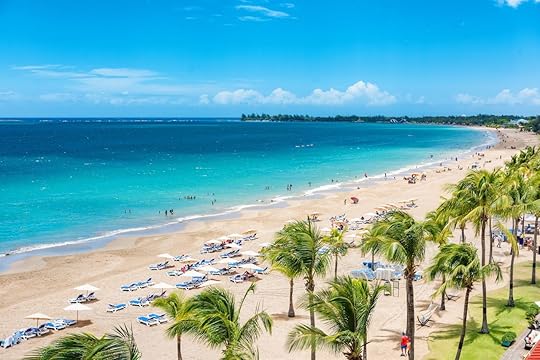
Photo: Maridav/Shutterstock
Except for September and October, which are typically hot, low-wind months, Puerto Rico has fairly consistent wind throughout the year. Hurricane season is June through November, so keep an eye on things before you book during that period. Another factor is peak seasons. Late March brings spring-break visitors, as do December holidays. If you’re visiting during these busy periods, it’s smart to book lessons ahead of time, since instructors and gear are limited.
Experienced kitesurfers should visit between December and April for the best waves and conditions. In this period, you have a solid chance of being able to learn from the island’s best riders, who spend as much time in the water as possible during these months. But, for real beginners, the mid-summer period from July to September is ideal since the waves are calmer and the seas more predictable.
San Juan, Puerto Rico’s capital, is on the north coast. On the east side of the city, places like Isla Verde Beach and Punta Las Marias attract plenty of kiters. Things get more lovely and rustic due west of the city at places like Dorado Beach where we recommended lessons from the folks at Goodwinds.
To get out of the city and really savor the island’s stunning beaches, drive to the island’s south coast and explore Ballena Bay and La Parguera. Both spots are about two hours southwest from San Juan, with La Parguera being the better option for beginners. Experienced kitesurfers often head out by boat at nearby Gilligan’s Bay. Jobos Beach, on the northwest tip of the island fewer than two hours west of San Juan, is popular for beginners, as well, and equally free of San Juan’s highrises. The surrounding Isabella area has lodges and restaurants for post-session revelry and crashing. 

More like this: Everything you need to know about mofongo, Puerto Rico’s most important dish
The post Why Puerto Rico is the perfect place to learn to kitesurf appeared first on Matador Network.
April 22, 2020
Best micropubs to visit in London

London is a capital city full of breweries, bars, and pubs of all sorts. But for local beer enthusiasts, micropubs are where to go to meet up with mates and blow off steam after a long week at work. Micropubs have a welcoming communal atmosphere but shun the extras like sports games, whiskey, and legroom, to name a few. Instead, the focus is on what really matters: beer and conversation. There’s no quicker way to get to know Londoners than by catching them post work at the neighborhood micropub.
To be classified as a micropub, a pub must not be controlled or owned by a brewery. It’s what’s known as a freehouse. Micropubs rose in popularity throughout the mid-2000s and generally have just one common room and a limited selection of libations — primarily cask ales. Cask ale, also called real ale, is still-fermenting beer that’s shipped to a bar in the cask it’s intended to be served in. The quality of the pour, therefore, relies on the bar owners who decide when it’s ready to be tapped and served to the public.
Originally, freehouses served as an alternative to noisy, overcrowded London bars. By 2013, however, it seemed apparent that this was not a passing bar trend. Interest in craft beer continued to increase, and drinkers needed places to try the growing number of beers available.
A tour through London’s micropubs is one of the best ways to see a different side of the city. You’re not only likely to engage in some interesting conversations, but those conversations are going to be focused on life in the city rather than popular tourist attractions or where to find the best fish and chips.
Here’s where to start.
1. The Owl and the Pussycat
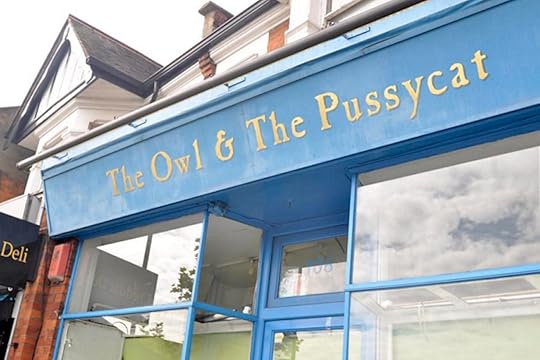
Photo: The Owl & The Pussycat/Facebook
In 2016, the Owl and the Pussycat became the first micropub in west London when it opened in the space that once held a bookshop. The owners also own and operate their own microbrewery, which makes this micropub an outlier. The original shelves that once held children’s stories are now home to board games and puzzle books.
Where: 106 Northfield Ave, Ealing, London W13 9RT, United Kingdom
2. The Dodo
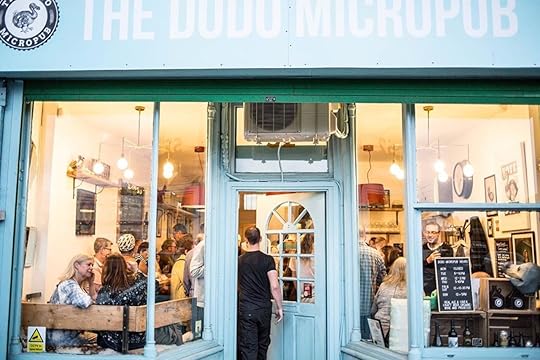
Photo: The Dodo Micropub/Facebook
The Dodo< is a tiny pub in far west London that has become an award-winning community staple. This Hanwell borough local haunt works in close partnership with Weird Beard Brewery but remains independently owned by a quintessentially cool London couple. It’s a one-room pub where you order and are served from your seat to save space as opposed to crowding at the bar. The space stays airy and light, thanks to its big windows, and the menu features real ale, craft beer, cider, and natural wine. The Dodo often throws game nights, hosts food pop-ups, and puts on beer tastings. It’s truly a place you’ll want to frequent if you’re lucky enough to live closeby.
Where: 52 Boston Rd, Hanwell, London W7 3TR, United Kingdom
3. The Beer Shop

Photo: The Beer Shop London/Facebook
Located in the southeastern part of London, The Beer Shop was once a very typical corner shop before being turned into a quiet Nunhead neighborhood hangout. The pub prides itself on being a family-friendly establishment in the tradition of UK pub culture in general. There are even coloring books for children on the tables. This establishment is also the stomping grounds of a local running club, the Runheads, who frequent The Beer Shop post-run to, you know, refuel.
Where: 40 Nunhead Green, Nunhead, London SE15 3QF, United Kingdom
4. Little Green Dragon
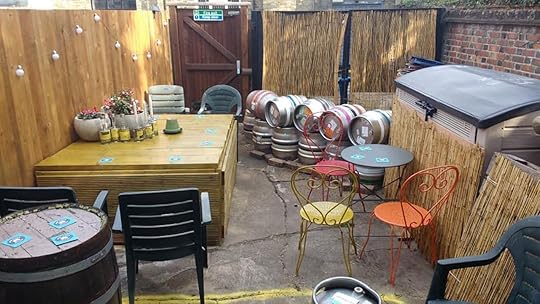
Photo: The Little Green Dragon Ale House/Facebook
This micropub was named the London Pub of the Year in 2018 by the Campaign for Real Ale, which is an influential UK beer group. What makes the Little Green Dragon special is a small outdoor space that’s open when the weather is nice and the owner’s collection of old British bus memorabilia. The memorabilia has become something of a communal treasure chest. Locals who frequent the micropub started donating their own memorabilia and football fan paraphernalia to the Dragon’s “decor.”
Where: 928 Green Lanes, Winchmore Hill, London N21 2AD, United Kingdom
5. The Radius Arms Micropub
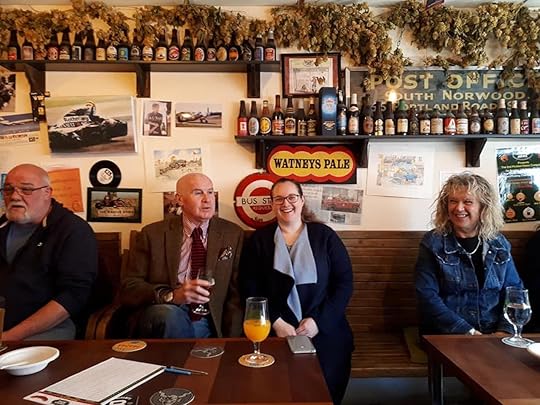
Photo: The Radius Arms Micropub/Facebook
Despite being just outside London city limits, Radius Arms is worth the trip. The small pub is filled with collectible beer bottles, old books left by previous patrons, classic board games, and other lovable clutter. The entire space reads like a decorative ode to all things old school England, including nods to the owners’ love of aviation and motorsports.
Where: 205 Godstone Rd, Warlingham, Whyteleafe CR3 0EL, United Kingdom
6. The Hangar Micropub
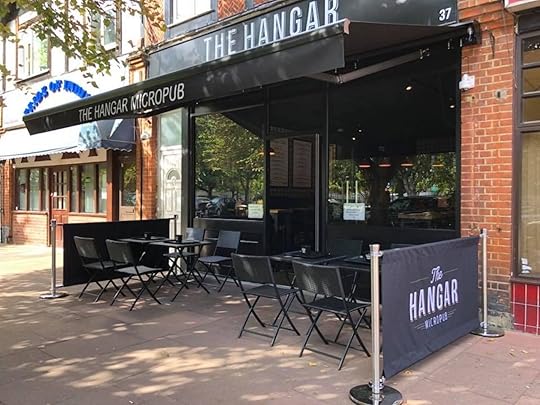
Photo: The Hangar/Facebook
The Sidcup neighborhood of London is no stranger to micropubs. This corner of the capital has the most micropubs of any area in the city. The Hangar is one of Sidcup’s youngest tiny pubs, and it has already created a cult following. The Monday evening quizzes are a favorite outing for locals. Despite having so many neighboring businesses in the same industry, the wide selection of both beer and wine sets The Hangar apart.
Where: 37 The Oval, Sidcup DA15 9ER, United Kingdom 

More like this: The best bars in London you need to drink at right now
The post London’s micropubs embody the best of Britain’s drinking culture appeared first on Matador Network.

Environmental progress in 50 years
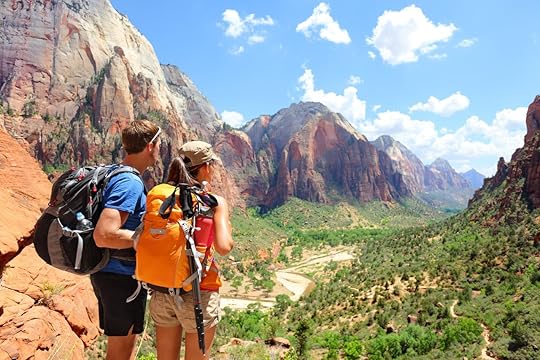
On April 22, 1970, the United States celebrated its first Earth Day. It was created by Wisconsin senator Gaylord Nelson to force the government and populace to pay attention to the impact humans have on the natural environment. Earth Day number one saw 20 million people, a full 10 percent of the US population, demonstrate across the country. Pushed in part by this strong showing, Congress created a federal agency that’s still working to protect the environment today: the Environmental Protection Agency.
Many things have changed in the 50 years since, but Earth Day remains a major day for environmental education and advocacy. Earth Day 2020 admittedly looks a little different due to restrictions put in place to limit the spread of COVID-19. Still, that hasn’t stopped people from urging that we do better — Pope Francis is calling for climate action, and NASA released a video showing how things have changed via satellite imagery, to name a couple.
We’re no stranger to discouraging climate news. Humanity has a lot of work to do before we get to any place that could be considered healthy when it comes to the pollution of our air, land, and water. But that doesn’t mean it’s all bad out there.
Here are some positive trends in the United States since that first Earth Day 50 years ago.
1. Substantially less toxic air
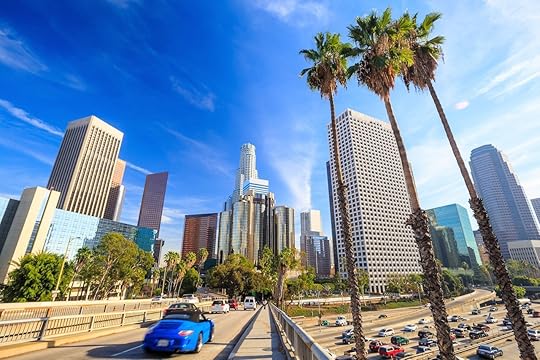
Photo: f11photo/Shutterstock
The concentration of three major pollutants — nitrogen dioxide, sulfur dioxide, and lead — has decreased considerably since the first data in 1980, according to Scientific American. The first two are harmful to human health and are part of what’s broadly known as smog while the toxicity of lead is now well known. Lead levels in the air started to drop in the ‘70s when leaded gasoline was swapped for unleaded.
A paper from the National Bureau of Economic Research (NBER) found that air pollution from manufacturing has decreased as well — 60 percent between 1990 and 2008. Overall, even as the population, the economy, the number of cars on the road, and energy consumption grew, the total emissions of toxic air pollutants dropped.
The EPA tracked the concentration of six common pollutants and found promising results. From 1980 to 2018, the concentration of carbon monoxide fell by 73 percent, lead fell by 99 percent, nitrogen dioxide fell by 62 percent, and sulfur dioxide fell by 90 percent.
2. Safer, cleaner water
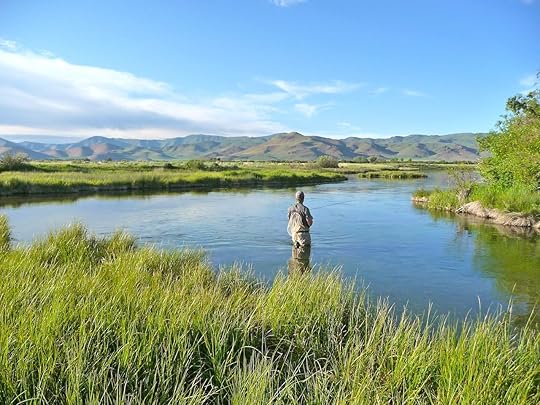
Photo: Megan Carley/Shutterstock
One of the clearest signs of extreme pollution came in 1969 when the Cuyahoga River by Cleveland, Ohio, caught on fire. Normal water, it doesn’t need to be stated, doesn’t catch on fire. But industrial pollution over the previous 60 years had turned the water source into a flammable toxic dump. The event was a sparked motivation for legislation, and the Clean Water Act finally passed in 1972.
The Clean Water Act gave the EPA authority to police pollution in our waterways and set standards. It also made it illegal to pollute into navigable waters except by permit and provided money for water treatment plants.
Since then, more than $1 trillion has been spent to correct water pollution in the US. The number of waters safe for fishing grew by 12 percent between 1972 and 2001, according to a 2019 study published in The Quarterly Journal of Economics. Additionally, the pH of the country’s rivers and lakes has gone up due to less acid rain, which means less acidic water closer to its natural state.
The 2019 study did find that more than half of streams and rivers still violate pollution standards to some degree, but real progress has been made despite changes in government that have been less than friendly to waterways.
3. Industrial coal use isn’t growing, resulting in a healthier population
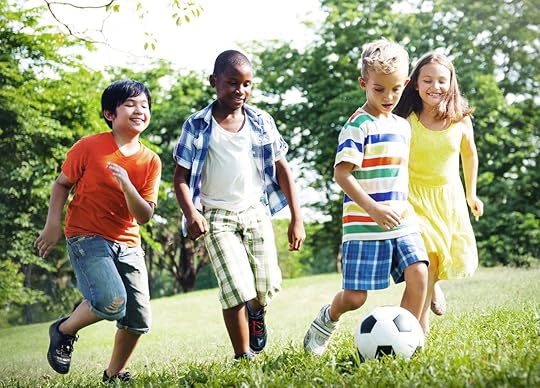
Photo: Rawpixel.com/Shutterstock
The US has a long way to go before renewable energy sources are where they need to be. Renewable energy was only 17.5 percent of total the electricity generation in 2019, according to the EPA. Yet the use of coal hasn’t grown at the same rate of industry and population in the US over the past 50 years. This is beneficial for the population’s health.
A study from the Columbia University Mailman School of Public Health found that, as plants switched off coal or enacted emissions controls, residents in Kentucky had fewer asthma symptoms and emergency department visits. Kentucky isn’t the only state seeing the benefits of moving away from coal. A study from researchers at the University of California, San Diego found that shutting down coal-powered units saved more than 26,500 lives between 2005 and 2016.
4. Recycling has gone up 35 percent across the country

Photo: Rawpixel.com/Shutterstock
Recycling has long been a key component of Earth Day. In 1960, the recycling rate was only seven percent. Today, it’s more than 35 percent. That number doesn’t reflect where we could be, however, or the most efficient recyclers in the nation. The first container deposit law passed in Oregon just a year after the first Earth Day, which set the standard. States with bottle bills have a 70 percent average recycling rate versus the national rate of 35 percent, according to CityLab.
5. Trash is being turned into energy — not landfill

Photo: Skynavin/Shutterstock
Not everything can be recycled. Some of that trash can, however, be turned into energy through combustion. According to the EPA, energy recovery from trash is worse for the environment than recycling or reusing, but it is better than treatment and disposal. The benefits when it comes to things that can’t be recycled is twofold: It reduces solid waste put into landfills and provides a source of energy.
Waste combustion has long been a part of the country’s trash management plan. Early efforts polluted the air and water, however, and the Clean Air Act of 1970 restricted or shut down incineration facilities. By the 1990s, technology caught up and pollution control equipment kept emissions in check and made combustion once again an option — this time without so much air and water pollution.
Less than 500,000 tons of trash was diverted from landfills and turned into energy in 1970, compared to 34 million tons in 2017. 

More like this: 5 quick actions you can take to protect public lands under attack this Earth Day
The post 5 ways the environment has improved since the first Earth Day appeared first on Matador Network.

Sean Yoro underwater murals

Coral reefs throughout the world are in danger, largely because of rising global temperatures created by manmade greenhouse emissions. One artist, Sean Yoro, set out to raise awareness of the marine ecosystem’s fragility through this powerful art installation in Oahu, Hawaii.
The project, called “Deep Seads,” consists of three underwater murals painted with ecologically safe materials on artificial reefs made out of concrete and metal.
Yoro free dove 10 hours a day for 15 months to paint the murals, an experience that pushed him to his physical and mental limit.
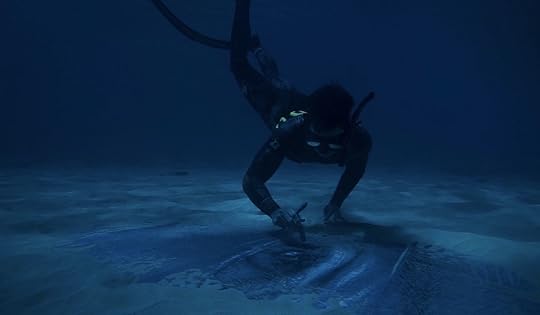
Photo: Hula (Sean Yoro) via Kapu Collective
The first mural, called “Lumens,” depicts a person with closed eyes and raised hand with a jellyfish floating by; “Breath” shows a figure holding their breath underwater; and “Buried” shows a person’s body concealed by sand while one eye peeks out. The murals were intended to represent impermanence, change, and harmony with nature, and draw attention to the threats facing coral reefs. All three murals disappeared within 14 days, consumed by algae that transformed the reefs into habitats for coral and other marine life.

Photo: Hula (Sean Yoro) via Kapu Collective

Photo: Hula (Sean Yoro) via Kapu Collective
Yoro told Global Citizen, “I love the fact that these murals are not only homes for animals, but they give life back to the ocean. It almost feels like when a tree falls over and so much more life grows from that tree. These sites can keep growing and expanding and marine life will just take over and nature will just run its course.”
Yoro’s work is dedicated to pushing the limits of art in nature and is highly engaged in raising awareness of climate change. He’s previously created murals on icebergs, trees, and on walls covered by greenery or by tidal waters. 

More like this: The most exciting places to scuba in 2020
The post These ephemeral underwater murals transformed into artificial coral reefs appeared first on Matador Network.

History of Sri Lankan wambatu moju

It was round 7:00 PM in an open-air kitchen, surrounded by the dense jungles of Sri Lanka and the chirping of frogs, when I discovered the name of the dish in front of me: wambatu moju.
“Also, some say, pickled brinjals,” said Suchar, my chef and cooking class teacher for the evening.
Before him, Suchar had laid out a selection of knobby vegetables and fruits: tomatoes, green beans, pumpkin, ash bananas, beets, jackfruit, red onions, and, finally, eggplant. But when he’d asked me what I wanted to make that evening, I only had eyes for one: the shiny purple eggplant.
During my time in Sri Lanka, I’d become fond of the colorful curries. Sri Lankan curries are not what I’d expected. The flavors are fresh, spicy, and vegetable-forward, and they don’t include decadent creams or sauces. But there was one dish that stood out to me. I first ate wambatu moju as a side dish in a small ceramic bowl. On the first bite, my tongue burst with flavors that were at once meaty, sour, caramelized, and tingling with spice. But I had absolutely no idea what I was eating. The menu read “Sri Lankan curry 500rps,” and when I asked the restaurant owner what I was eating, he gave me an amiable shrug. I left with a full belly and a new mystery to solve.
The same pattern continued throughout my time in Sri Lanka — occasionally I would luck upon that familiar meaty, pickle-y mysterious side dish, but I couldn’t figure out what it was. It was only during the cooking class with Suchar on one of my final evenings in the country that I made the connection.
The origins of wambatu moju

Photo: danielcastromaia/Shutterstock
Eggplant is a member of the nightshade family, and its origins are thought to be in Southeast Asia — specifically India and Sri Lanka. Nowadays, eggplant thrives across Sri Lanka, its green stems persevering even when under direct sun or faced with a lack of rainfall. Unlike the deep, midnight-colored eggplants of the West, Sri Lanka’s eggplants are thinner, more magenta than violet, and have stripes of white down the shiny skins. Tasting one at a Sri Lankan dinner table that’s deep-fried and pickled, you will suddenly realize that this is how the oft-bland fruit was meant to taste.
Wambatu moju (the Sinhalese word for eggplant is wambatu), otherwise known as pickled eggplant, is a classic Sri Lankan dish made primarily from, you guessed it, thin slices of eggplant. The eggplant slices are fried and pickled alongside small pearl onions or shallots, chilis, and spices. The resulting dish is a combination of the eggplant’s meaty texture, the fiery spice of chili, the pickled tanginess of vinegar, and the caramelized sweetness from deep frying. Wambatu moju is a common dish on many Sri Lankan dinner tables and is also often served at weddings and special events.
The origins of the wambatu moju are a little harder to untangle, seemingly as complex as the dish’s flavors itself. There are dishes similar to wambatu moju around the world. From Sri Lanka’s neighboring subcontinent of India, in the Punjabi region, there’s baingan bharta. This is a similar dish made from thinly chopped eggplant and chilis although the acidity of vinegar is replaced with lime juice. There’s also melanzane sott’aceto, a pickled eggplant dish popular in Italy, where the spicy chili and ginger of wambatu moju is replaced with herbs like parsley and oregano.
Then there’s berinjela, the Portuguese word for eggplant, which is often served in Brazil in spicy, balsamic-vinegar-marinated strips. Both Brazil and Sri Lanka were Portuguese colonies in the early 1500s, and the three cultures’ cuisines have similarities.
Making wambatu moju at home

Photo: Courtesy of Sarah Bence
Weeks later, back at my home in Michigan, I had a craving for wambatu moju. I sliced the eggplant into thin strips, throwing out the black or pock-marked areas that Suchar had warned me about. I salted it and squeezed out the excess moisture before deep-frying the strips in oil until they turned a dark, sweet brown. Using the same oil, I fried shallots and jalapenos (“For you — two — for me, I use six,” Suchar’s words echoed in my memory). Separately, I mixed a sauce of pureed ginger, garlic, mustard powder, turmeric, salt, sugar, and vinegar. Then, I combined it all and waited, as I’d learned, for the flavors to meld, deepen, and pickle.
My homemade result — which took hours of slicing, frying, and squeezing — was subpar compared to the homemade wambatu moju I ate by the bowlful in Sri Lanka. But that won’t stop me from continuing to try and perfect my iteration of the classic Sri Lankan dish — at least, until I get a chance to return to the country that does it best. 

More like this: Watalappan is the Sri Lankan dessert that’s impossible not to love
The post Wambatu moju is the fried, pickled Sri Lankan delight you need in your life appeared first on Matador Network.

Visiting a concentration camp
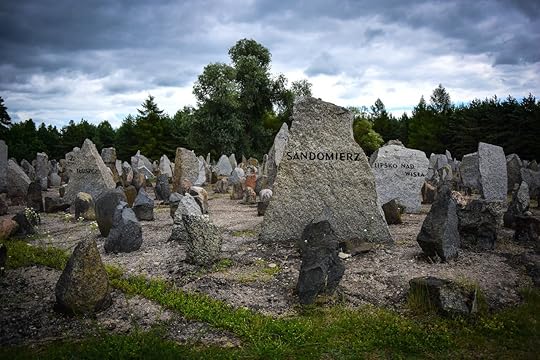
“You still want to go to that concentration camp?” my friend asked me as we crossed into Poland from Lithuania. It was the eighth day of our road trip through the Baltics, we were embarrassingly hungover, and I could tell from his tired tone what he hoped the answer would be.
From the outset of the trip, when I first raised the idea of going to Treblinka, I knew he wasn’t terribly enthused. I couldn’t blame him. To a non-Jew, the prospect of spending a sunny June afternoon walking around a cemetery, where one of the greatest atrocities in human history took place, isn’t exactly appealing.
“Yeah, I’d like to go,” I said, which was my polite way of saying, “There’s absolutely no way I’m skipping this.”
I was raised in a not-particularly-religious Jewish family — we ate lasagna for Passover this year — but the Holocaust has nevertheless been part of my ethnic identity for my entire life. Not visiting the camp simply wasn’t an option.
“I feel kind of awkward going to a concentration camp, you know?” said my friend, as if special cops would be stationed at the entrance to expose and shame gentiles.
The idea of charting a GPS course to a concentration camp feels incredibly strange. Eighty or so years ago, millions would have done anything to avoid this place, and yet here I was Google Mapping our way there. The drive took us from a major highway to roads through small villages, and then into a dense, remote forest. As we plunged deeper into the Polish countryside, and the camp drew closer, I began suspecting that — unlike in the past — Treblinka would not discriminate between Jews and non-Jews. It would be awkward and troubling for both of us.
“Relax,” I said. “You’ll be fine.”
I was speaking as much to myself as I was to him.
Uncomfortable history is the most important history.
Driving to Treblinka feels a lot like driving into a thunderstorm before the rain starts. The quiet forest doesn’t feel tranquil, as it should, but somehow eerie and unsettling, and you find yourself looking for signs of darkness at every turn. Few actual signs mark the way. One, just outside the nearest village, simply read “Treblinka” with a forward arrow, while the next, in the thick of the forest was at the camp’s entrance. “Barracks,” it said, “Officer’s Quarters,” “Extermination Chambers,” and “Graveyard Memorial.”
“Where first?” my friend asked, trying not to appear as anxious as he clearly was.
“The graveyard, I guess.”
It sounded ugly coming out of my mouth.
As we walked the tree-lined path to the graveyard and memorial, along railroad tracks that once conveyed a reluctant cargo, I reminded myself that this was not just a morbid indulgence in dark tourism. Visiting a concentration camp is, on its most superficial level, a historical experience — but not like a visit to Rome’s Colosseum. You’re not supposed to stroll through the camp with a camera around your neck, marvel at the remains of old buildings, and revel in a peaceful day in the forest. You’re supposed to be uncomfortable. You’re supposed to feel like you don’t belong there. This kind of history is not beautiful, or even remotely palatable, but that’s what makes it important.
“I wonder what it looks like,” said my friend. “The graveyard. I wonder if they’ve changed it since then.”
We had been walking for 20 minutes along train tracks. We’d hardly seen anything yet, but I could already tell my friend’s attitude was changing. The place disturbed him, as it disturbed me, but the weight of its historical significance finally seemed to be sinking in, overwhelming his reservations. We tend to prefer history that thrills rather than disturbs, but that ignores the troubling episodes of humanity that truly deserve our reflection.
You won’t be able to predict your emotional response.
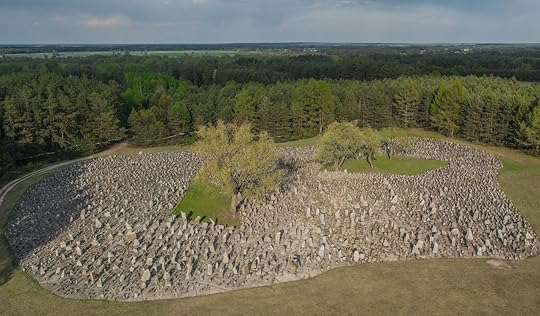
Photo: Alexandr Medvedkov/Shutterstock
We finally came to an opening in the treeline and rounded the corner into a vast field. The clearing was filled with thousands of little stones, stretching almost past the limits of my sight. They sloped up a small hill crowned by a single massive monument engraved with a menorah. I didn’t know for sure what the stones meant, but I had a pretty good idea. They were symbolic gravestones, representing the hundreds of thousands killed at Treblinka, and the big one — I later found out — stood on the site of the gas chamber itself.
Visiting a concentration camp means signing up for an emotional experience. That’s a given. But exactly how that emotion will hit is entirely unpredictable.
Taff Simon of Dark History Tours, who regularly guides visitors through the Dachau concentration camp, observed a stoic young visitor who, before arriving at the camp, didn’t seem particularly engaged or interested.
“We came to the gas chamber area, with the big ash graves and the memorials,” Simon said. “He’s very thoughtful by the look on his face and asks, ‘When did Hitler know the war was lost?’ [Which is a] very good question. I replied when Stalingrad fell in early 1943.”
Simon continued, “This young man’s face just folded and he sobbed out ‘1943? He knew in 1943…but he just kept killing my people…another two years…he killed them…’ He was really sobbing…I see tears all the time — some hidden, some not — but this was something else.”
My friend, who was not Jewish, had no Jewish relatives, and no personal connection to anyone in the Holocaust, tiptoed through the stones like they were fragile artifacts. I could tell he was shaken. I didn’t learn the exact numbers until later — there were 17,000 stones, representing between 700,000 and 900,000 killed — but the sheer volume of them, and the sinister crime they represented, was staggering.
Anyone who has studied the Holocaust in school understands on an intellectual level the tragedy of what happened in the concentration camps. But until you visit one, the camps are just a cold, distant idea. The foundations of old buildings, tombstones of the dead, and train tracks that have fallen into disuse. Being there makes it real.
“So…this is where they killed them?” my friend said, in clear disbelief.
I wanted to answer him, to ask him what he thought of the place, or at least share my own thoughts — but words of any kind at that moment just seemed empty. I didn’t say anything.
Even Simon, a professional guide with hours of training under his belt, struggled greatly with the camp’s visceral impact. Though Simon “had managed to switch the horror off,” and compartmentalize his professional duties and the camp’s disturbing effect, he soon began to have recurring nightmares.
“The last three times it happened I was being dragged out after being beaten, then stood up against a wall and shot,” he said. “I’d wake with an absolute start, pulse racing.”
He took the dreams as a sign that he was spending too much time in the camp, and cut his number of weekly tours in half.
Going to Treblinka isn’t like any other tourist attraction. Even for trained guides, the experience isn’t easily consumed, digested, or regurgitated to friends and family. You can’t predict what it will be like from pictures and movies, and no two people will process it in quite the same way. And that’s what makes it special.
It’s not just a Jewish experience. It’s a human experience.
After the memorial and graveyard, we walked further into the forest to another clearing where the barracks had been. This is where prisoners slept while they awaited extermination. The buildings themselves are gone, but the foundations remain. Standing inside the stone foundations, envisioning the terror-stricken souls who once inhabited the very same space, was even more unsettling than the cemetery. The vast field of symbolic gravestones shed light on the Holocaust’s scale. The barracks made it chillingly intimate.
The collection of demolished dwellings took race, ethnicity, and religion out of the equation. Huddled together in darkness, the prisoners were not Jews, gypsies, communists, homosexuals, and the disabled; they were human victims of an inhuman act, whose memory was far too recent for comfort.
Arja J., a guide at the Sachsenhausen concentration camp in Oranienburg, Germany, always emphasizes to her tour groups the Holocaust’s universality. Hate, intolerance, and persecution is “in all of us,” she says, “and we have to be hyper vigilant that it will not happen again. Manipulation of the masses is a very current event…and so the only way to prevent any similar events is for people to understand the structure and the mechanics behind [these atrocities].”
Standing on that foundation, I was no longer a Jewish-American citizen standing with an Italian-American citizen. We were just two people, not unlike those who once occupied the barracks; we were just lucky enough to be standing there in 2019 rather than 1942.
Many popular attractions awe visitors through the power of addition — intricate architecture, a high-flying performance, stunning natural beauty. Concentration camps awe through subtraction. Themselves austere and basic, they have a way of stripping away your extraneous concerns and prejudices. They force you to shed your preexisting concept of identity, and smack you in the face with a sobering sense of humanity.
“One of the scariest things about Dachau,” said Simon, “is that a lot of what happened there seems very contemporary. Dachau and places like it force us to look at ourselves, and as such, are extremely relevant to us today — whether we have lost family in Holocaust, have an interest in history, or some other reason to visit. They inform us about the human condition.”
On our way to return the rental car in Warsaw, we played the “so what was your favorite part of the trip?” game. I was sure his answer would be partying in Tallinn, or taking night sky photography in Latvia.
“Favorite probably isn’t the right word,” he said. “But it was definitely Treblinka. Is that weird?” 

More like this: 7 most fascinating dark tourism destinations around the world
The post Visiting a concentration camp is not just an excursion. It’s a lesson in humanity. appeared first on Matador Network.

Trump says national parks reopening
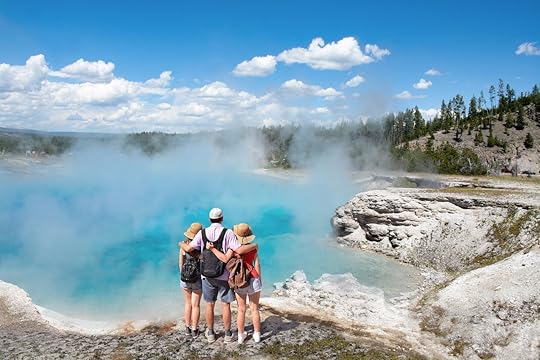
Your return to the great outdoors may be coming very soon.
During a tree-planting ceremony on the White House lawn today in commemoration of Earth Day, President Donald Trump announced plans to begin reopening our national parks, with details forthcoming in the next few days.
“Thanks to our significant progress against the invisible enemy, I am pleased to announce… we will begin to reopen our national parks and public lands for American people to enjoy,” Trump said during the ceremony. Most of the national parks system has been closed down in efforts to slow the spread of COVID-19.
This came on the heels of the president’s announcement of plans to begin reopening the US economy, and opening the parks is another step in that direction. Taking his cue, governors around America also announced their plans, including opening more businesses and state and regional parks.
But don’t start gassing up your car for that long-awaited road trip to Yosemite quite yet. The Department of the Interior, which is in charge of national parks, will be reopening parks in conjunction with respective governors’ plans for their states. So, if current events are any indication, you’ll have a lot better odds of going to Big Bend in Texas before Yosemite in California.
Is this the right move?
“You have a lot of land to open up,” Trump said to Secretary of the Interior David Bernhart during his remarks. “People are going to be very happy.”
But not everyone is applauding the administration’s move.
Immediately following the announcement, Phil Francis, the chairman of the Coalition to Protect America’s National Parks, released a statement saying, “We understand that the president is eager to reopen our national parks and we share that sentiment. However, parks should not open before the safety of National Park Service employees, concessionaires, volunteers and other partners, including those in gateway communities, can be ensured.”
The CPANP was among the first voices calling for the closure of national parks when the pandemic began.
Still, several states have begun moving towards opening public lands in the past week. Arizona made moves allowing boaters to use lakes around the state. Jacksonville, Florida, opened its beaches for limited hours of exercise. And Texas state parks are set to reopen this coming Monday.
Whether the move is detrimental to efforts to contain COVID-19 remains to be seen, but for the time being, you can, legally at least, begin staving off cabin fever by planning a trip to a national park (though, ideally, not the most heavily touristed ones). While it may not be a full return the world we knew a few months ago, it will at the very least remind us that nature is still out there. 

More like this: 9 of the best places to camp in the US during summer
The post Trump announces plans to begin reopening national parks appeared first on Matador Network.

Classic European pie styles
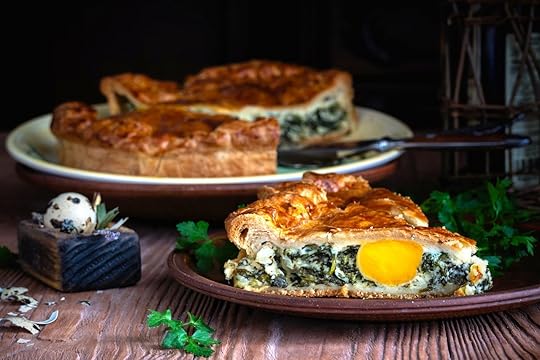
Americans often think of pie as a sweet treat. Some of the most vivid pie memories include diving into a thick slice of pumpkin pie on Thanksgiving or devouring the last remnants of apple pie on the Fourth of July. But pie is far from a sweet American dish. In fact, it really isn’t that American at all. Countries across the world, especially across Europe, have their own unique (and ancient) pie recipes that come in all shapes and sizes. Some are sweet; many are savory and filled with cheese and potatoes. All are worth a try on your travels.
Keep an eye out for these eight popular pies and tarts from around Europe.
1. Zelten — Austria

Photo: Die Wiener Lichtbildmanufaktur/Shutterstock
Zeltens are little hand pies from heaven. These discs are popular in shops and markets around Austria. The most famous variety, the mohnzelten, is stuffed with a gooey poppyseed filling. Poppyseeds are a symbol of luck, and these lucky zeltens are most popular around Christmas and New Year. Other versions are filled with nuts (nusszelten) or fruit like apples. The dough is less flaky than other pie doughs, holding all of the delicious filling together and maintaining its shape with each bite.
2. Pastel de nata — Portugal

Photo: Cristina.A/Shutterstock
These custard-filled treats (pastel de nata translates to “pastry of cream”) fit perfectly in the palm of your hand. The flaky dough is filled with a creamy egg custard, and the top is lightly caramelized. It’s also sometimes called pastel de Belém (pastéis when plural) after the Jerónimos monastery in the Lisbon region of Belém where the egg tarts were invented in the 1800s. Monasteries were shut down in Portugal in 1834, and the monks started selling their pastries to the masses. A storefront opened in 1837 dedicated to the pastéis. Today, you can find pastéis de nata around the world, but few experiences match up to eating one in the original, blue-and-white-tiled shop in Belém.
3. Appeltaart — Netherlands
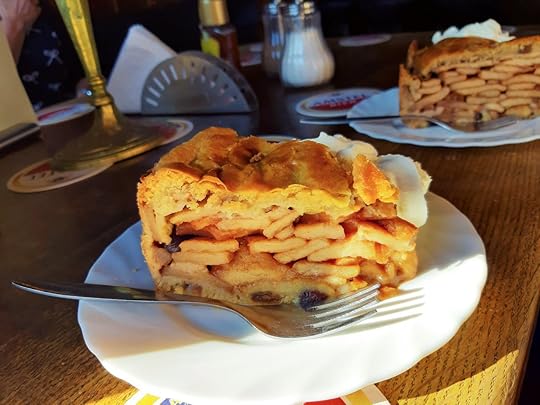
Photo: alessia_penny90/Shutterstock
While the United States loves to claim apple pie as its own, this popular delicacy has a much older history. The Dutch have been perfecting their appeltaart recipe since at least the Middle Ages, which is when the oldest recipe is said to have come from. This sweet pie is a tall order today — literally. The Dutch version stands much higher than American apple pie, and it is filled with large chunks of tart apples, cinnamon, lemon, sugar, rum, and brandy. A mound of whipped cream on the side or on top is standard.
4. Spanakopita — Greece
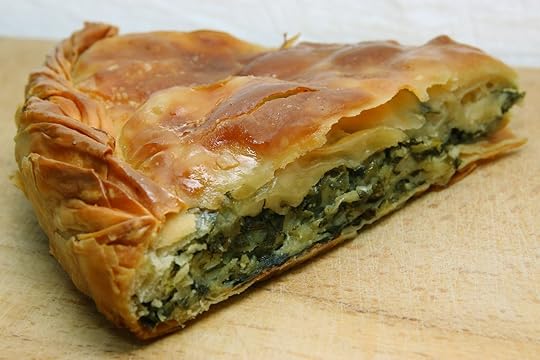
Photo: MIKE MANIATIS/Shutterstock
Spinach and feta cheese (spanakopita means “spinach pie”) make up the filling of this savory pie wrapped in layers of phyllo (also spelled filo) dough. Phyllo is paper thin, unleavened dough that’s layered and brushed with oil or butter. It’s frequently used in Balkan, Mediterranean, and Middle Eastern cuisines. Similar spinach pie recipes are found in these regions as well, making it hard to pin down the true origins of the dish. It’s not hard to pin down when people eat it, however, as it’s a commonly consumed snack or starter. Spanakopita is popular year-round but is a beloved food during the week before Lent when diets are traditionally restricted to eggs, butter, and milk.
5. Galician empanada — Spain
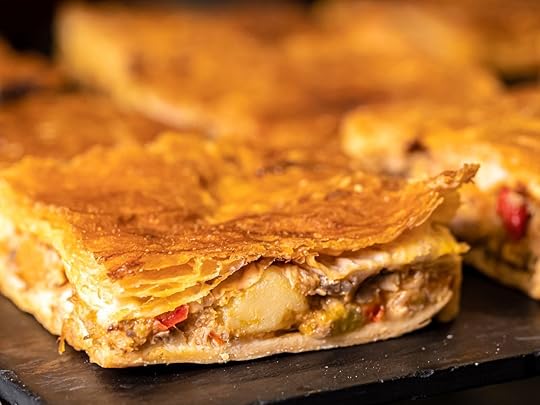
Photo: JaviSI/Shutterstock
This thick-doughed delicacy comes from the region of Galicia in the northwest of Spain, which is situated at the confluence of the Cantabrian Sea and Atlantic Ocean. Galician empanadas are made with a mixture of cooked tuna, tomato sauce, peppers, onion, and spices that are sandwiched between a doughy top and bottom crust. It’s typically cooked in a rectangular dish and served in cut squares. The word empanada stems from the spanish verb empanar, which means “to bread.” While many countries have their own version of empanadas, the original is believed to have come from Galicia, and a Catalan cookbook from 1520 lists an empanada recipe.
6. Shepherd’s pie — United Kingdom

Photo: Oksana Mizina/Shutterstock
Mashed potatoes are the crust of this savory comfort food. Common throughout the UK, shepherd’s pie combines ground meat (usually lamb) with veggies like onion, carrots, and peas. The filling is all mixed in a gravy-like sauce. These ingredients are then topped with the potatoes and baked until the topping browns slightly. It’s a hearty dish that was typically made to satiate hunger after a long day’s work on the farm or in the factory. Today, however, gourmet chefs are putting their own spin on shepherd’s pie, and you’re likely to find alternatives to the original, including vegetarian versions.
7. Torta Pasqualina — Italy

Photo: coffeeflavour/Shutterstock
Torta pasqualina is the traditional vegetarian Italian Easter pie. The flaky pastry crust encases a monstrous amount of leafy green filling, which often includes artichokes, chard, or spinach. Small divots for whole eggs with unbroken yolks are made inside. The dish comes from the northwest region of Liguria, though it’s now popular around Italy and is served year-round, not just at Easter.
8. Quiche Lorraine — France

Photo: Ingrid Balabanova/Shutterstock
Eggs and bacon are the stars of this dish, which is delicious for breakfast, lunch, or dinner. A rich, buttery pastry dough forms the base of this open-faced pie, which is one of many varieties of quiche. This one comes from the Lorraine region of France, as the name suggests, which neighbors Germany, Belgium, and Luxembourg. Like all quiches, the French classic has its roots in German cakes — quiche comes from the German work for cake, kuchen. In addition to bacon, quiche Lorraine can also be filled with fragrant gruyère cheese and onions. 

More like this: 6 mouth-watering, savory pies from around the world
The post 8 iconic European pies, from sweet to savory appeared first on Matador Network.

White orca in Puget Sound
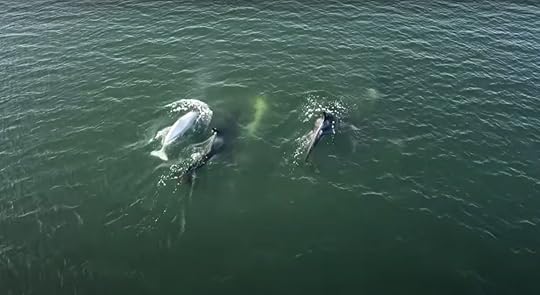
Spotting an orca in its natural habitat is a beautiful sight that few get to experience, but seeing a white orca, a unique specimen, among an entire pod, is even rarer.
But on Monday, April 13, Scott Griffin and his family got to see just that when a pod of orcas, including a pale grey one, visited Case Inlet near his home in Allyn, Washington.
To get a better view, he flew his drone out and caught the most striking footage of the unique pale mammal swimming with its fellow orcas. Thanks to its coloring, the animal was very visible underwater.
The animal is a young male born in 2018 whose name is Tl’uk, a Coast Salish word meaning “bright moon,” explains the Orca Network’s Howard Garrett who knows the animal well.
Garrett photographed the whale recently too and told Orca Network, “He stands right out. I don’t know that there is anything different about him or his family. He seems to be the right size for his age, and traveling with them, perfectly normal behavior. But he sure glows really bright.”
Garrett saw the whale on April 7 at Holmes Harbor on Whidbey Island, though the whale family is rarely spotted in local waters. Usually, they spend their time north of the San Juan Islands.
“It is great to see that guy, just amazing,” said Garrett. “There is a certain mystical quality.”
The orca is classified as a gray transient whale, and he is only the second whale of his kind to be spotted in the Salish Sea. 

More like this: In search of whales
The post Extraordinary rare white orca spotted in the Puget Sound, Washington appeared first on Matador Network.

Stanley Tucci’s negroni recipe

Underappreciated actor and noted cookbook author Stanley Tucci is the latest surprising internet hero: On April 20, Tucci hopped on Instagram to provide viewers with a detailed explainer on how to make the perfect negroni, and now Twitter is all in a tizzy.
Tucci tapped into the fact that lots of people are leaning on alcohol to pass the time during lockdown and became our very own personal virtual bartender.
The recipe for a negroni is simple enough: equal parts gin, sweet vermouth, and Campari. However, Tucci tweaks the recipe just a tad. First of all, he likes to make his negroni up, a term that refers to a cocktail that’s chilled over ice then strained into a glass without ice, like a martini. He also adds a double shot of gin and just one shot of Campari. And he cautions that you need a “good sweet vermouth.”
“You know that brand Martini?” he asks the camera, then wags his finger disapprovingly.
Tucci pours the pink-hued drink in a classy coupe glass, no ice, and garnishes the drink with a slice of orange. Once you’ve got all those bases covered you’ll have the “perfect Milanese drink,” as he calls it. And he should know. He is the Italy expert, after all. Tucci recently filmed a miniseries for CNN about his travels in Italy called Stanley Tucci: Searching for Italy.
Predictably, the internet lost its collective mind over something so seemingly innocuous. His negroni-making skills are sexy, erotic, and Tucci himself became a “very hot dad.” Even Chris Evans weighed in, praising Tucci as an “absolute gem.”
But not everyone was quite so charmed by Tucci’s bartending: Several drinks and cocktail writers pointed out that a true negroni should never be shaken. Technically, the cocktail should be stirred.
Still, the general consensus seems to be that we are absolutely charmed to the heavens by Tucci. Personally, I hope he turns it into a series. Maybe Stanley Tucci’s Cocktail Hour? Stanley, if you’re reading this, believe me: If your recent surge in popularity tells us anything, it’s that this is the quarantine content we need right now. 

More like this: This Philadelphia restaurant will video call you to recreate the much-missed dining experience
The post Stanley Tucci’s negroni recipe is the key to a ‘perfect Milanese drink’ appeared first on Matador Network.

Matador Network's Blog
- Matador Network's profile
- 6 followers



